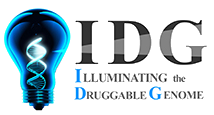Drug results: 4
| orphenadrine | A muscarinic antagonist used to treat drug-induced parkinsonism and to relieve pain from muscle spasm. |
|
| acetylsalicylic acid | The prototypical analgesic used in the treatment of mild to moderate pain. It has anti-inflammatory and antipyretic properties and acts as an inhibitor of cyclooxygenase which results in the inhibition of the biosynthesis of prostaglandins. Aspirin also inhibits platelet aggregation and is used in the prevention of arterial and venous thrombosis. (From Martindale, The Extra Pharmacopoeia, 30th ed, p5) |
|
| caffeine | A methylxanthine naturally occurring in some beverages and also used as a pharmacological agent. Caffeine's most notable pharmacological effect is as a central nervous system stimulant, increasing alertness and producing agitation. It also relaxes SMOOTH MUSCLE, stimulates CARDIAC MUSCLE, stimulates DIURESIS, and appears to be useful in the treatment of some types of headache. Several cellular actions of caffeine have been observed, but it is not entirely clear how each contributes to its pharmacological profile. Among the most important are inhibition of cyclic nucleotide PHOSPHODIESTERASES, antagonism of ADENOSINE RECEPTORS, and modulation of intracellular calcium handling. |
|
| nefopam | Non-narcotic analgesic chemically similar to ORPHENADRINE. Its mechanism of action is unclear. It is used for the relief of acute and chronic pain. (From Martindale, The Extra Pharmacopoeia, 30th ed, p26) |
|



